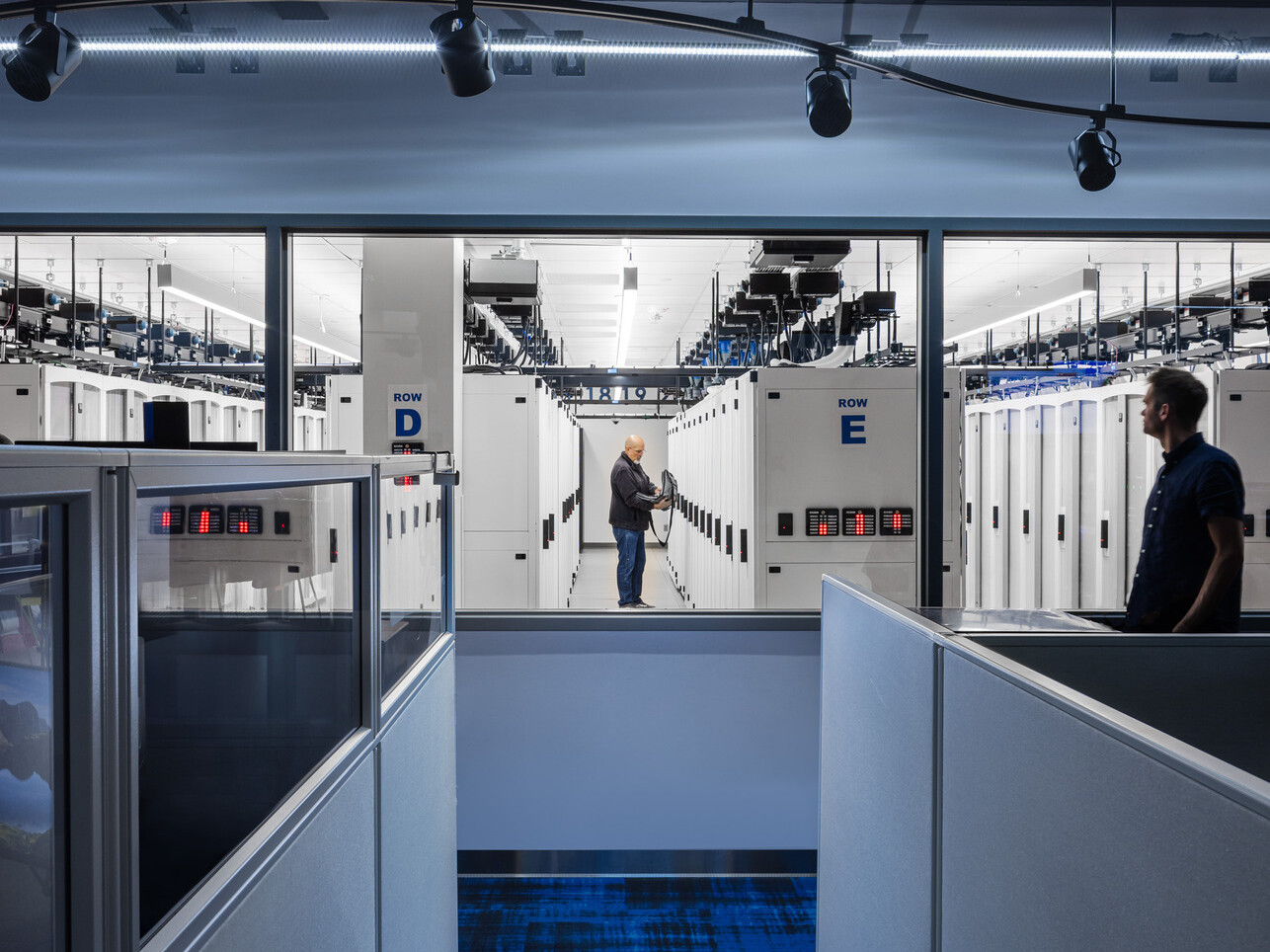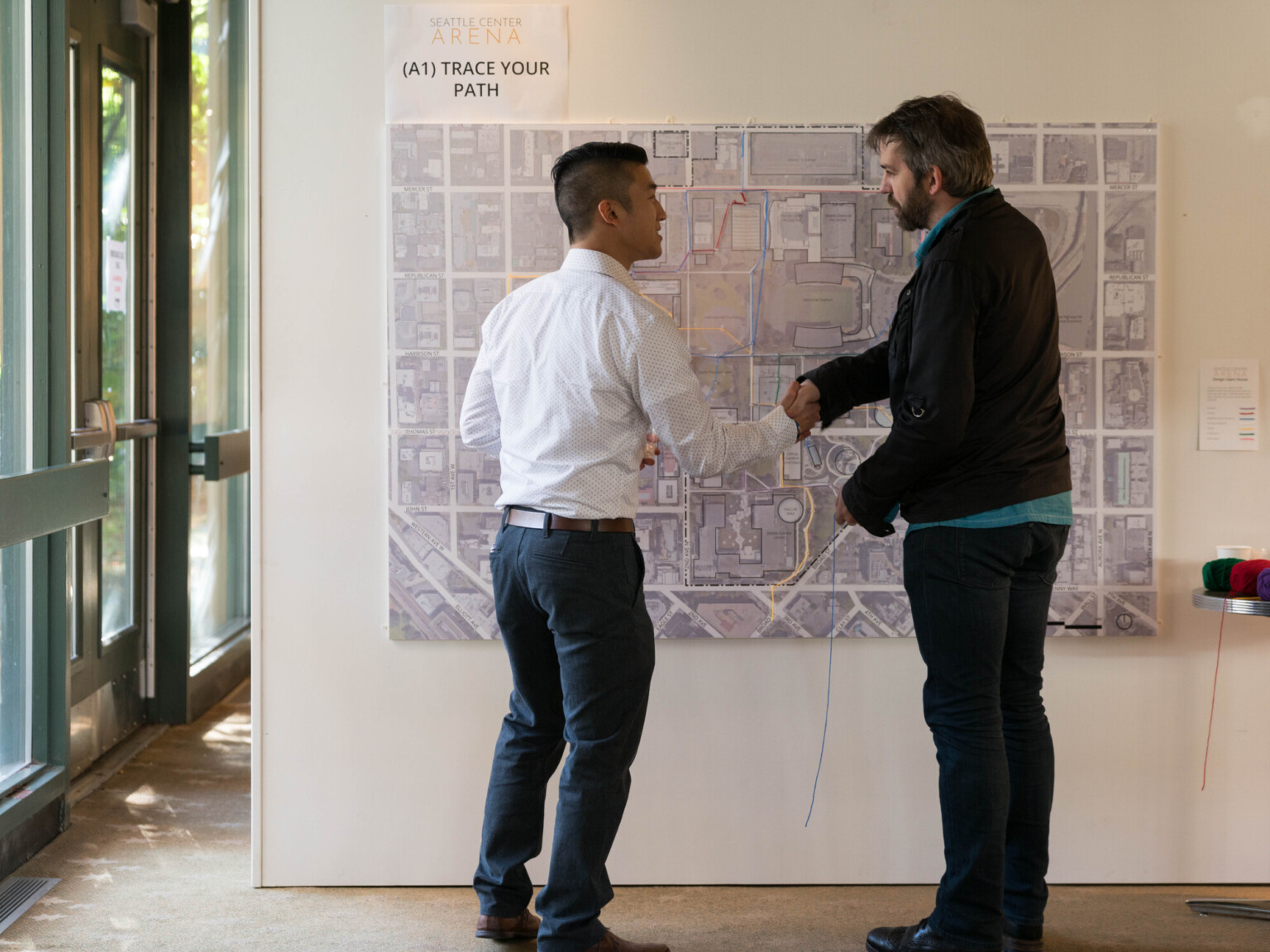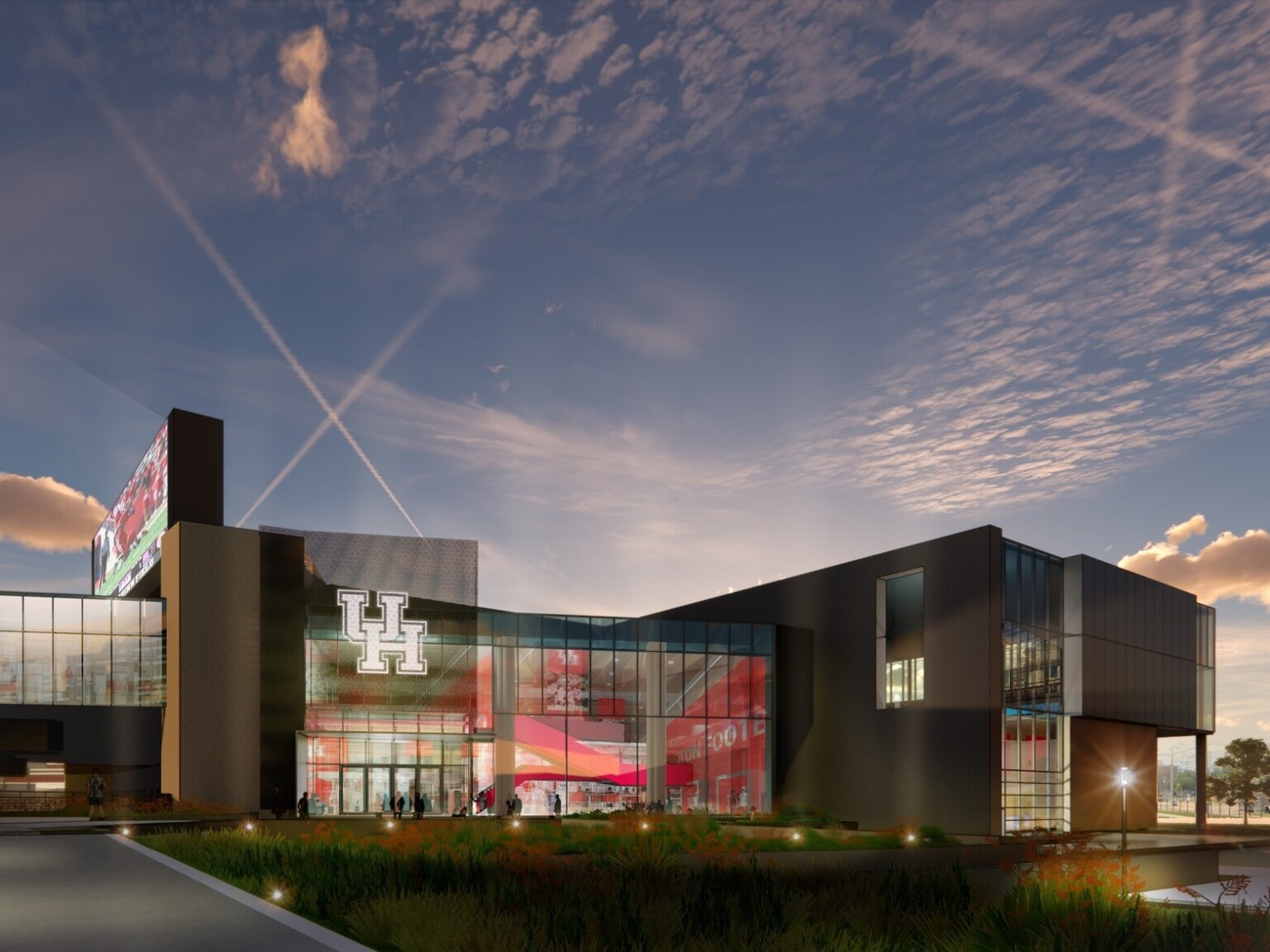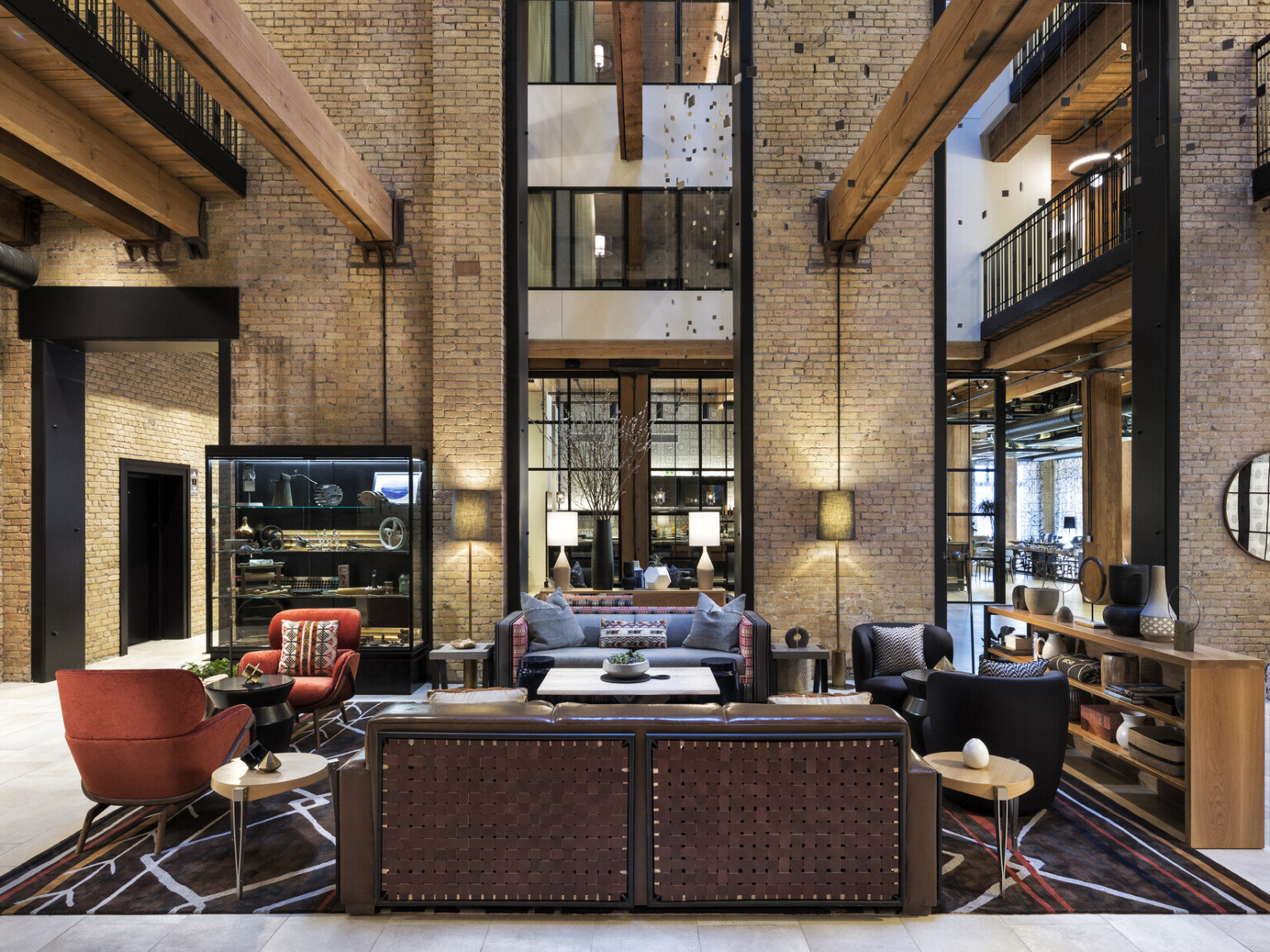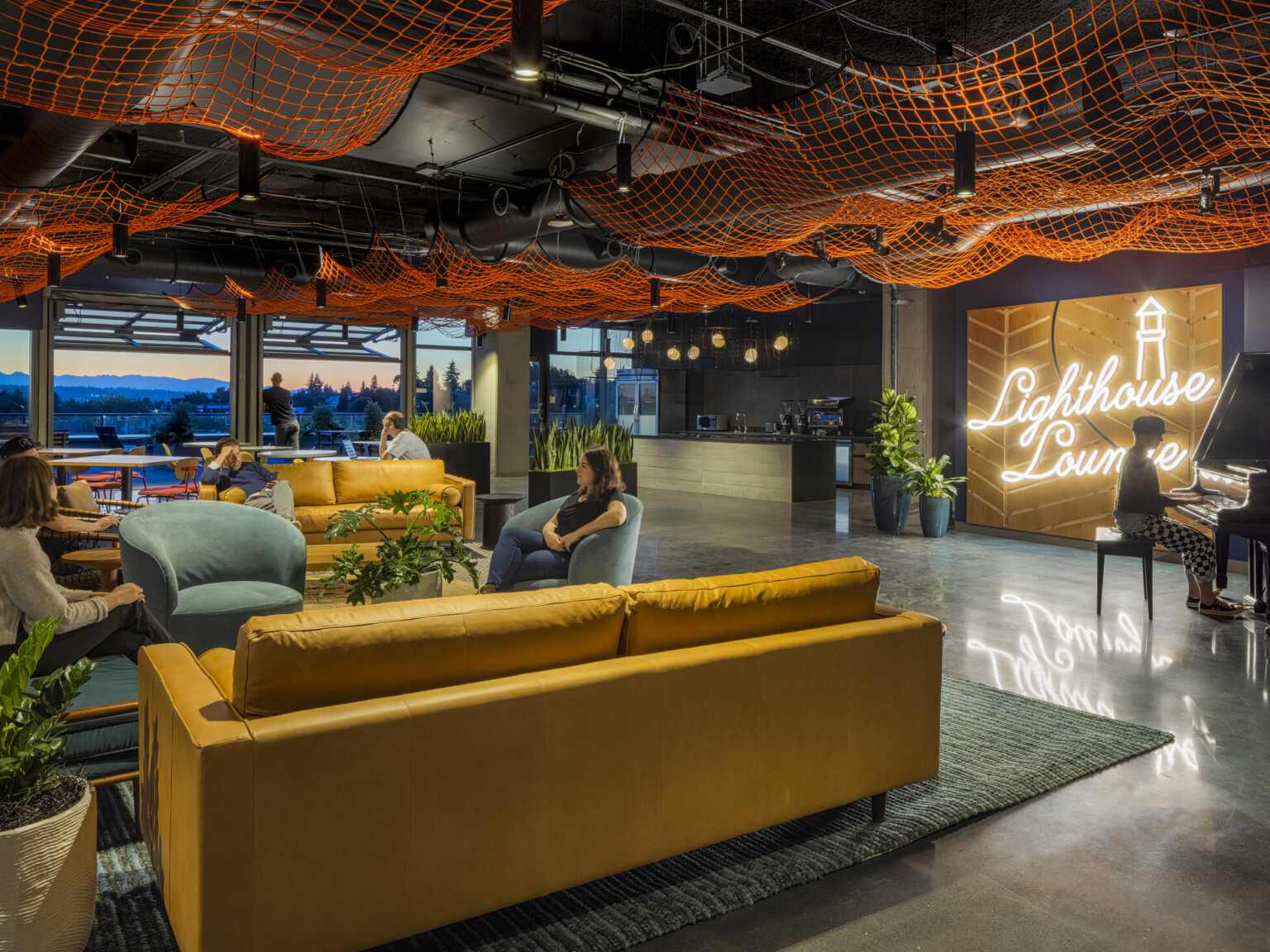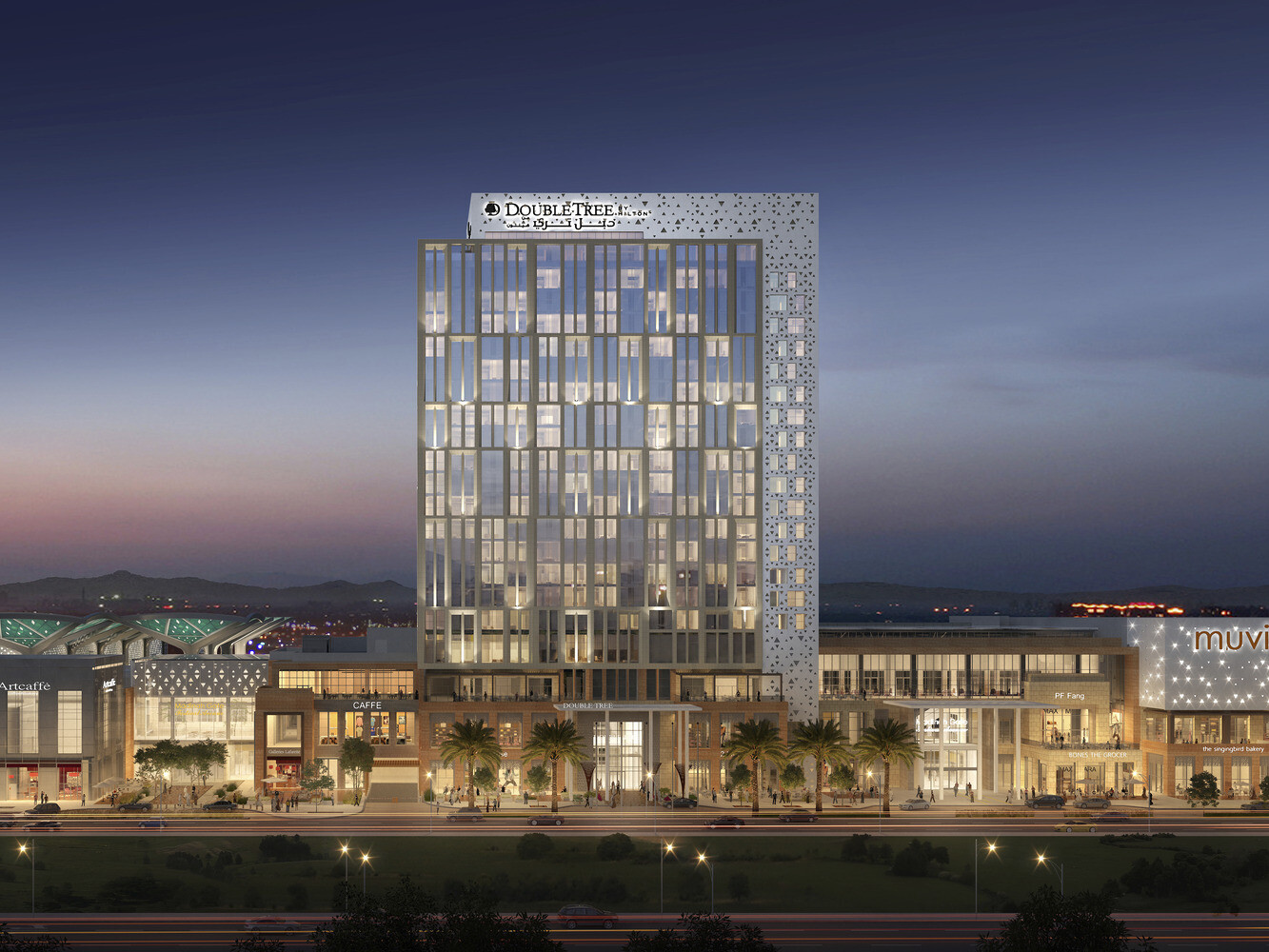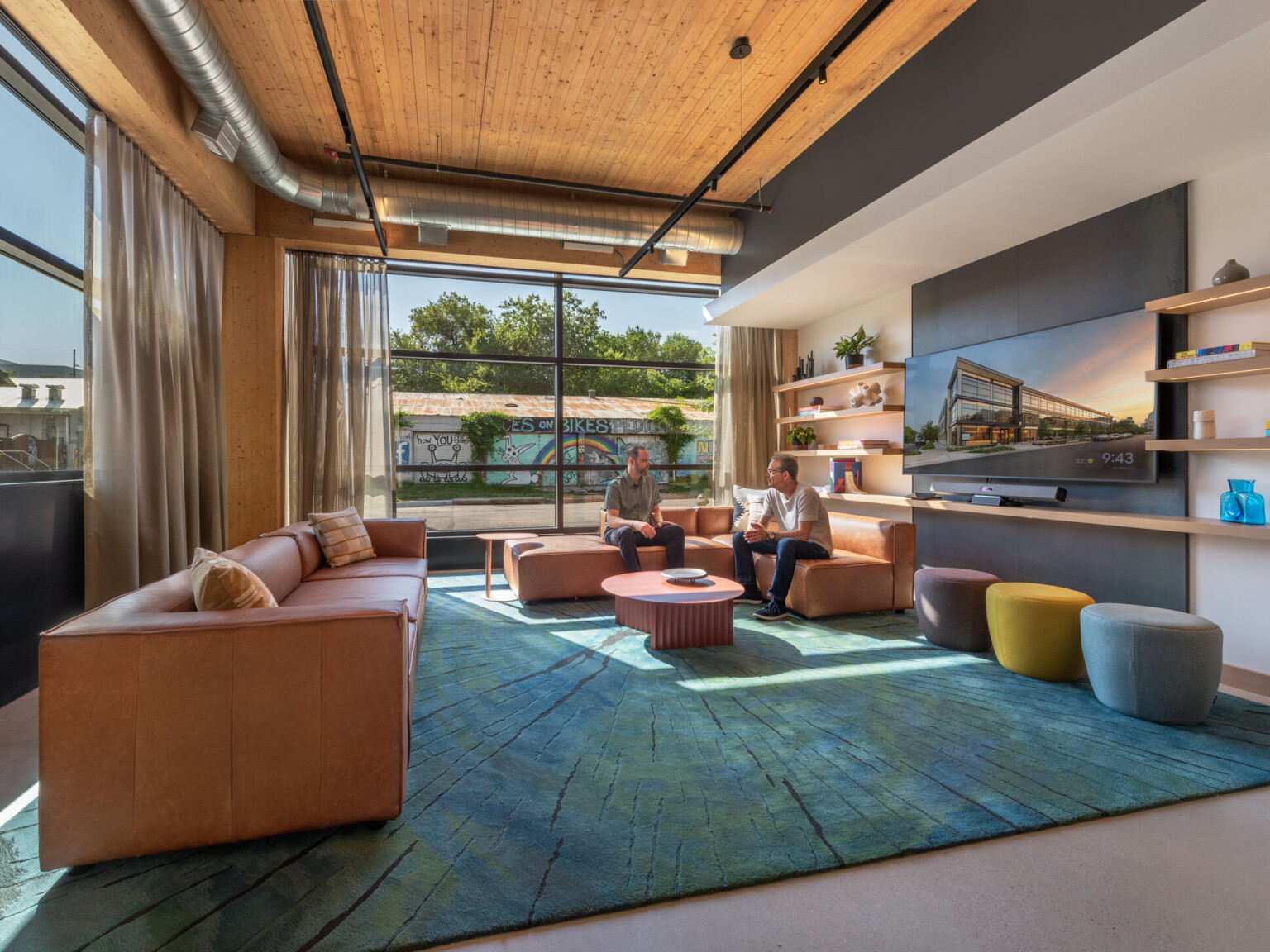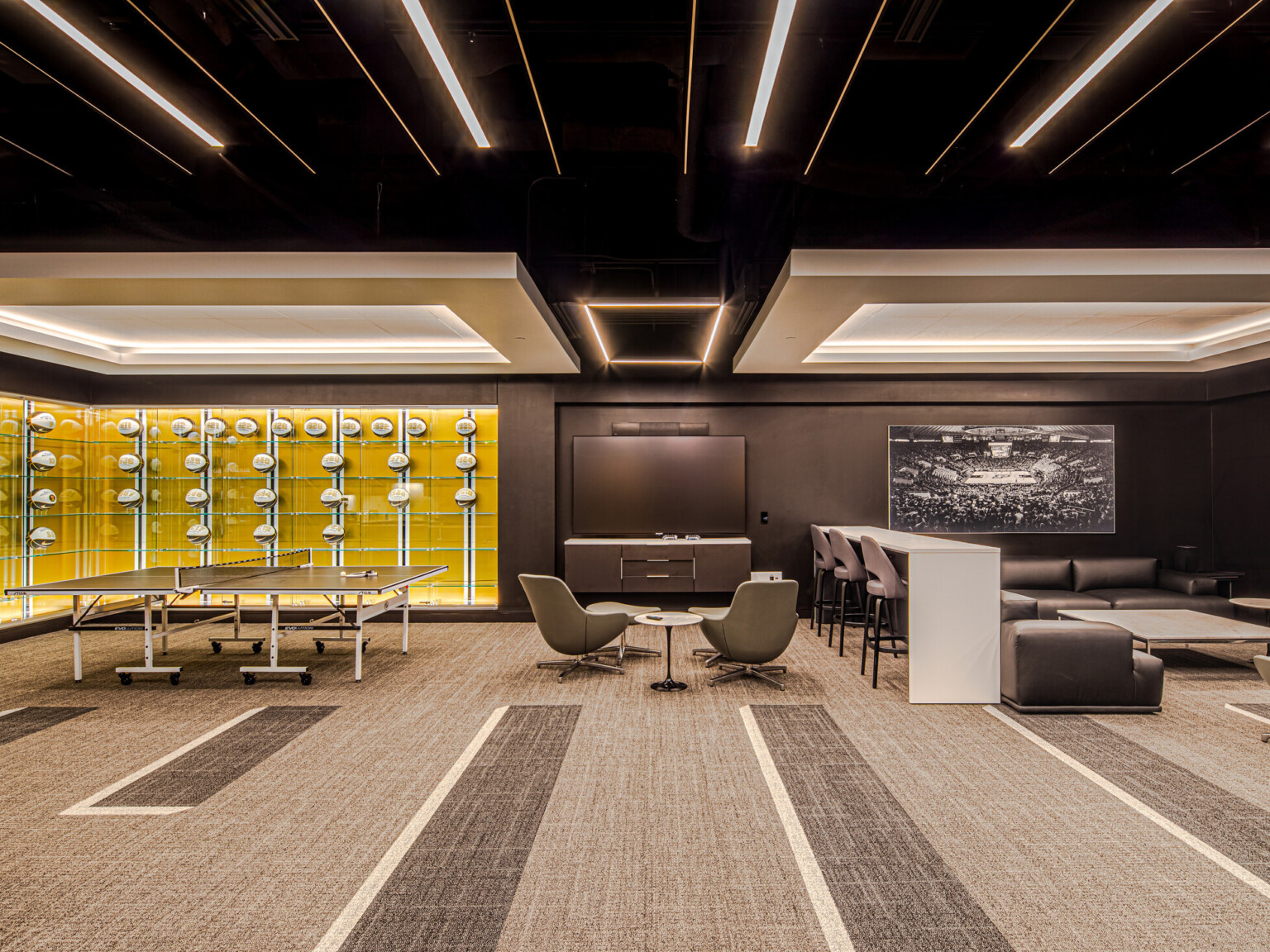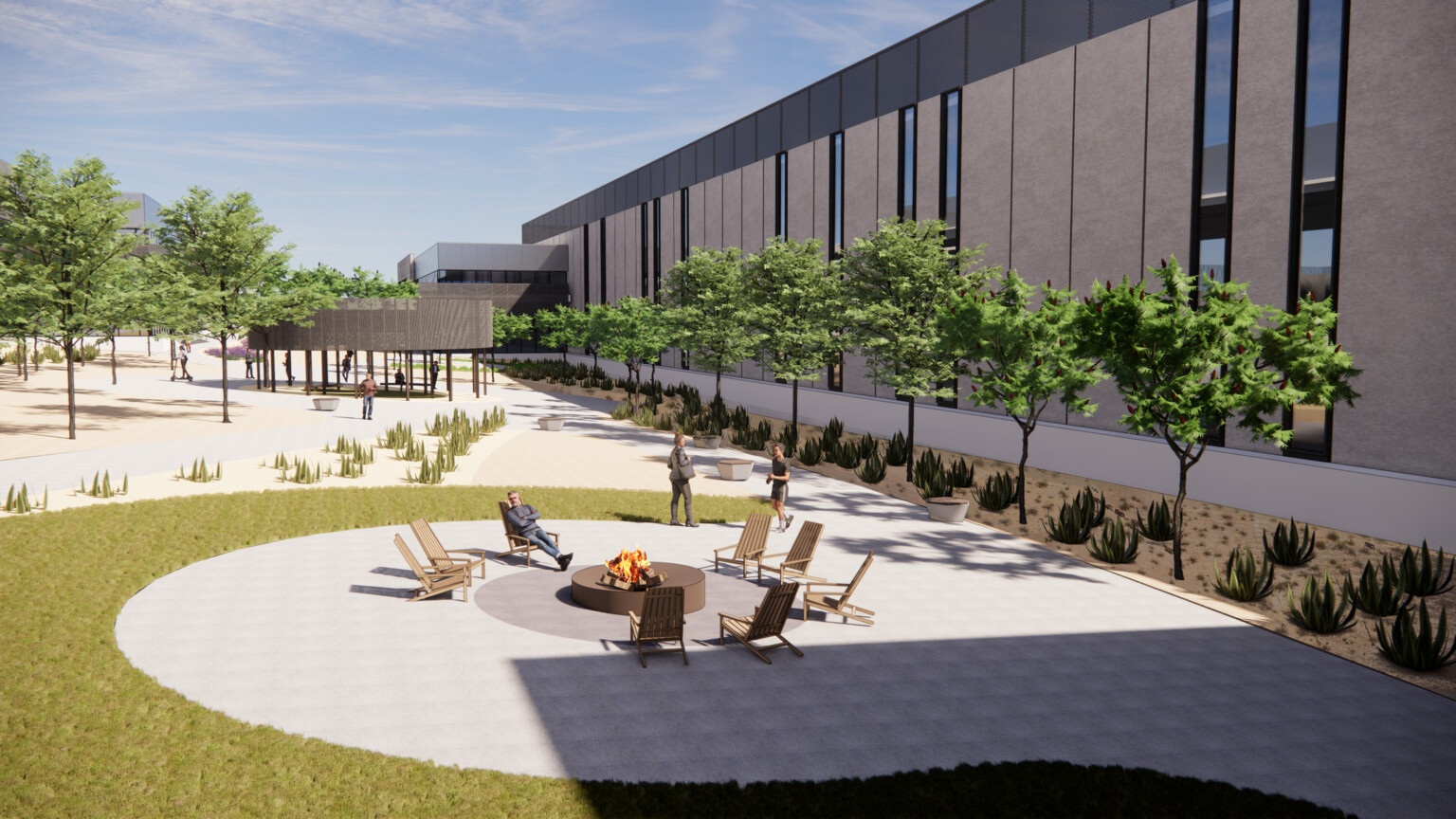
More Than a Box: Reshaping Data Center Design
Turning to aesthetics is an effective means to alter conceptions and foster positive relationships between data centers, their employees, and the communities they serve. This can involve architectural elements such as facades that mimic nearby buildings, or landscaping that incorporates greenery and natural features. By aligning with the aesthetic character of their surroundings, data centers can become an organic part of the community fabric, shedding the negative stigma often associated with their presence. Our work on Layer 9 Data Centers features a sprawling campus with active courtyards as the face of the structure. The outdoor spaces, lush with native biophilia, foster a healthier, more stimulating work environment while adding an element of verdant beauty to the surrounding community.
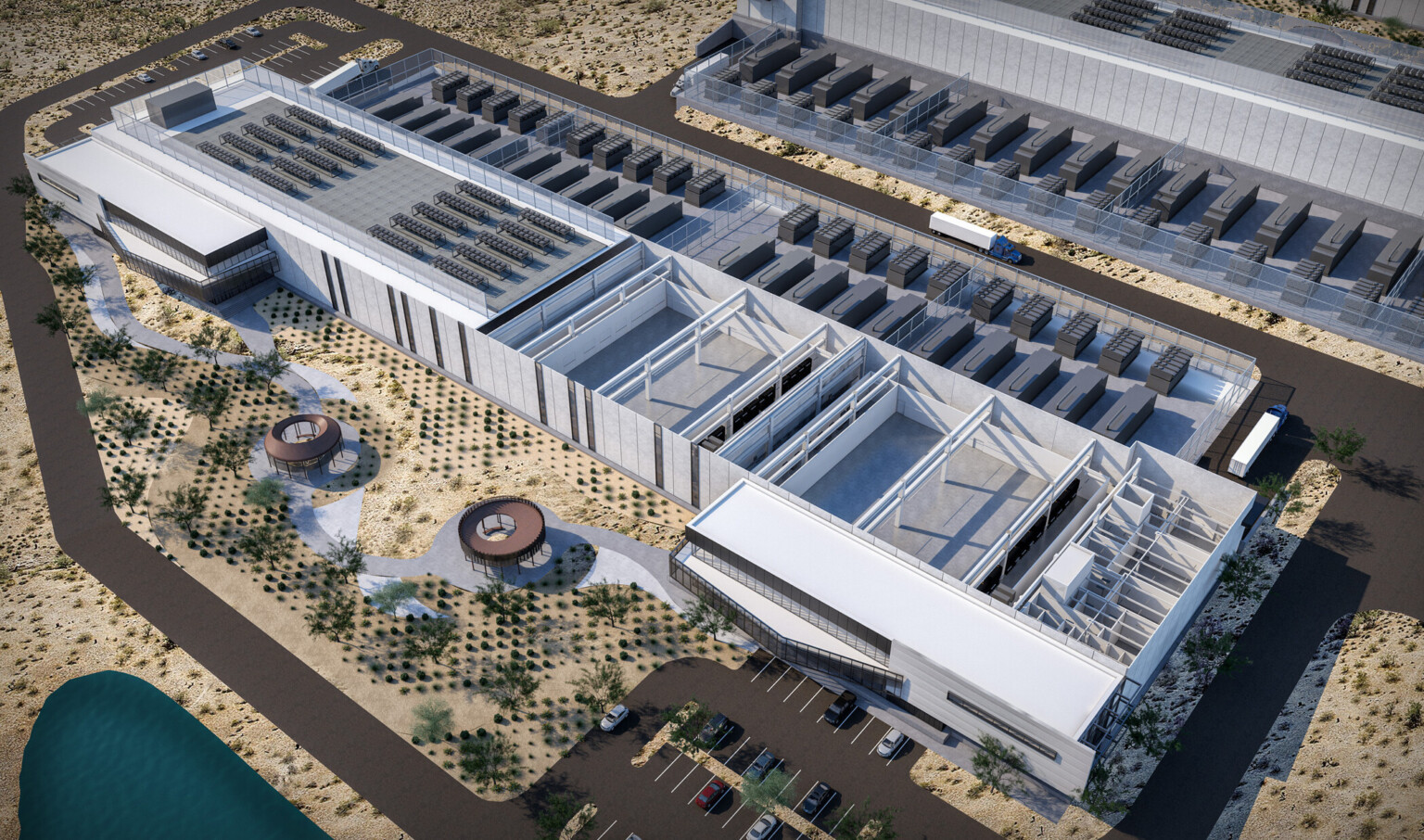
Rather than erecting imposing structures that clash with their surroundings, data centers can be designed to complement existing architectural styles and blend harmoniously with the local environment. The data centers of the past have been built on the ideas of efficiency and obscurity. Meant to remain an industrial ambiguity, maintaining a sense of anonymity was thought to conceal the sensitivity of what lies within the walls. However, the sudden appearance of a “concrete fortress” will often evoke more mystery than disinterest. By creating a structure that blends seamlessly into the surrounding industrial landscape and incorporating a certain degree of transparency, onlookers will be less inclined to develop a dangerous sense of curiosity, effectively maintaining the security of a data centers precious cargo.
As the veil is brought down and the once well-kept secret of data centers shared, first impressions can make a world of difference in connecting with local communities. Moving inside the building, bright, vivid colors and textures in social spaces such as lobbies, waiting areas, and conference rooms liven the work environment and welcome newcomers with a jovial appearance. Furthermore, the necessity for a constant watchful eye on the essential information housed within the walls means long, arduous shifts. Amenities such as kitchenettes and showers allow for a degree of separation and rejuvenation during the workday.
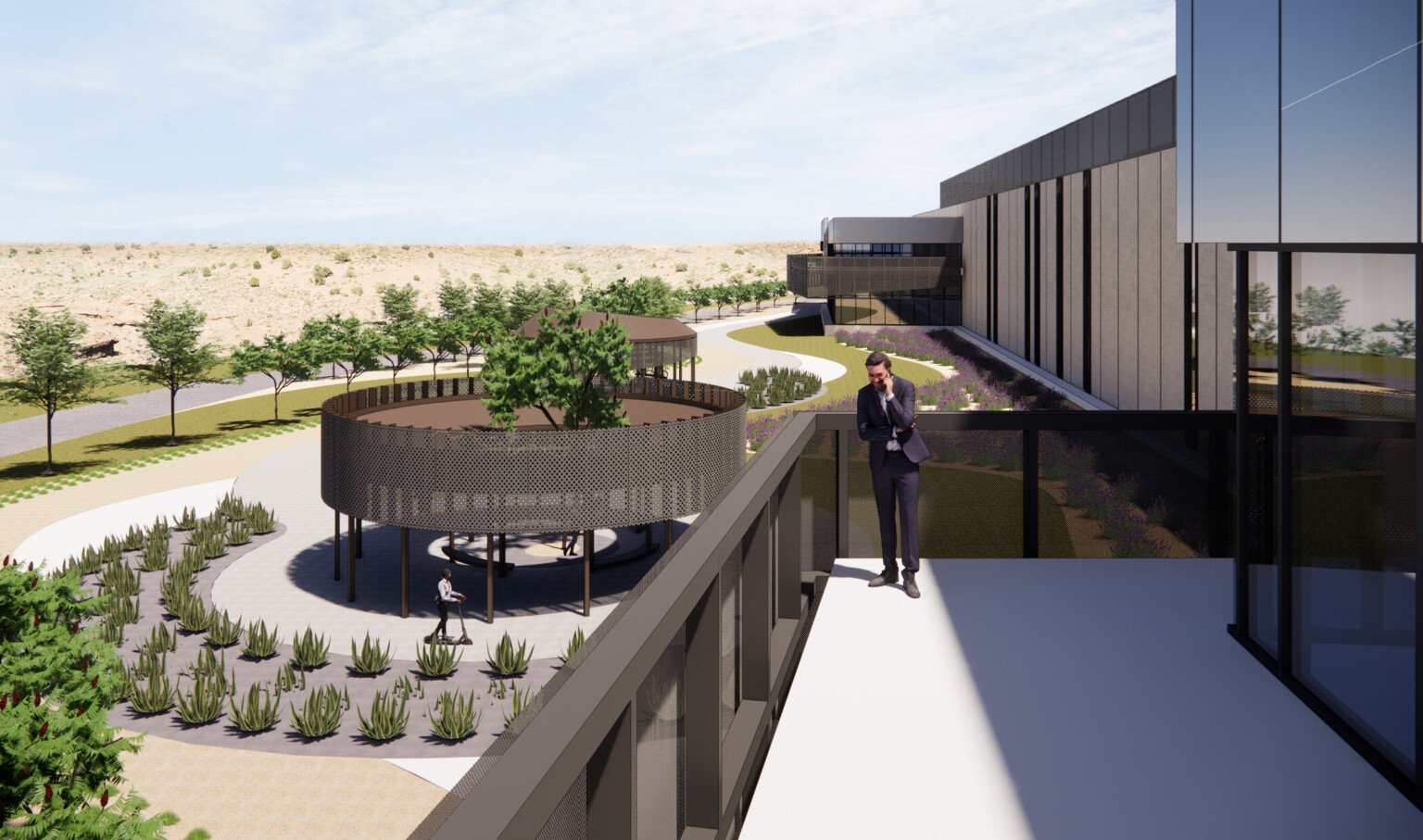
Creating an adaptable environment is essential for employee satisfaction and efficiency. Techniques such as modular construction, which allows for flexible designs, can lead to structures that are both functional and visually striking. Layer 9 Data Centers’ movable floor plates allow tenants to curate their space to fit their individual needs and enhance functionality. Moreover, sustainable features like solar panels, green roofs, and rainwater harvesting systems are being integrated into data center designs, demonstrating a commitment to reducing the environmental impact.
Apprehensive attitudes have risen, in some part, from the significant power demands which these facilities require, a concern that is generally unfounded. Because of the intense power and cooling needs of a data center, they often utilize back-up generators of their own design, and support construction of green power sources to offset their heavy usage. This means that the cost of power for the neighboring community will not be impacted by the facility’s energy consumption. Instead, the economic ecosystem is given a boost, as data center construction often leads to an increase in surrounding property values and an influx of new job opportunities.
At this pivotal moment, it is paramount for the data center industry to reshape its image both physically and perceptively. By prioritizing external aesthetics and internal amenities, design can shift the way communities engage with this workspace and impact the industry as a whole. Visually appealing data centers that not only seamlessly blend into but add beauty to their surroundings and incorporate sustainable practices not only address concerns related to energy consumption and environmental impact but also contribute positively to the communities they operate in.
Explore other data center projects.
To receive ideas like this directly to your inbox, subscribe to our email list.

